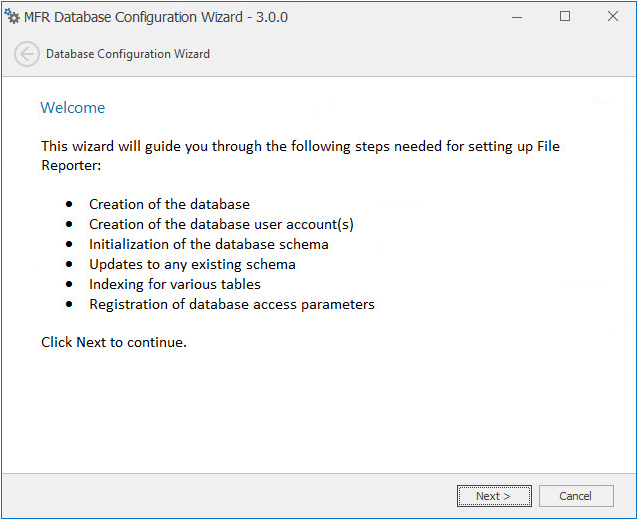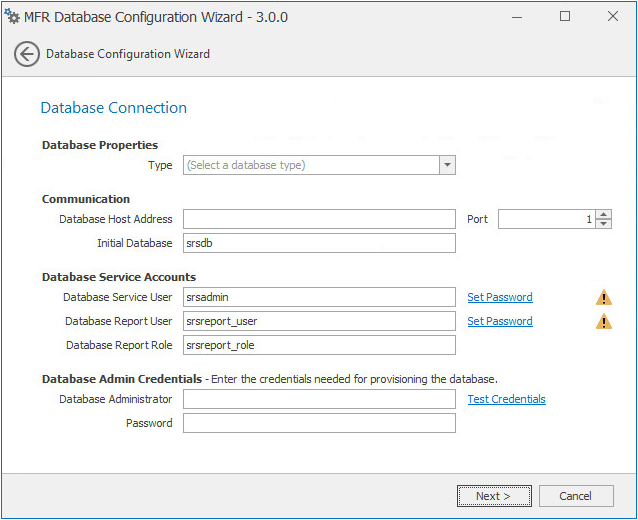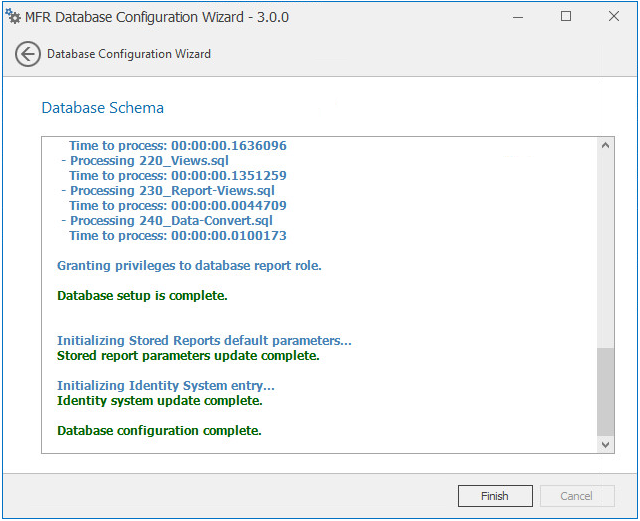7.5 Configuring the Database
-
Click Configure Database.

The page indicates what database configuration tasks are to be completed in this wizard.
-
From the wizard page, read the overview of what will be configured and click Next.

The page lets you establish the settings needed for the Engine and IIS to communicate with the database.
Database Properties: Displays information on the database name and version.
Type: Depending on the database you are using, select either PostgreSQL 9.2 or SQLServer 2012.
NOTE:These selections specify the minimum supported versions of the databases. If you had Microsoft SQL Server 2014 for example, you would select SQLServer 2012.
Communication: Specifies address, port number, and name of the database.
Database Host Address: Specify the host address of the server where the database is installed.
Port: The default PostgreSQL database port setting is 5432. The default SQL Server port setting is 1433. If there is a port conflict, you can change it.
Initial Database: The default name of the File Reporter database.
Database Service Accounts: Use this region to set authentication information for the Database Service User and Database Report User.
Database Service User: This field specifies the database account name that is used by File Reporter to manage data in the database. This account has both read and write access to the database.
Set Password: Click Set Password to establish the password for the Database Service User.
Database Report User: This field specifies the database account name that File Reporter uses to read data in the database while reporting.
Set Password: Click Set Password to establish the password for the Database Report User.
Database Report Role: This field specifies the account name of the role used to manage access for Report Users.
Database Admin Credentials: Use this region to establish the database administrator name and credentials.
Database Administrator: If you are using a PostgreSQL database, specify the superuser name. If you are using an SQL Server 2012 database, specify the administrator name.
Password: If you are using a PostgreSQL database, specify the superuser password. If you are using an SQL Server 2012 database, specify the database administrator password.
-
Click Next.

-
Review the configuration log and click Finish.
